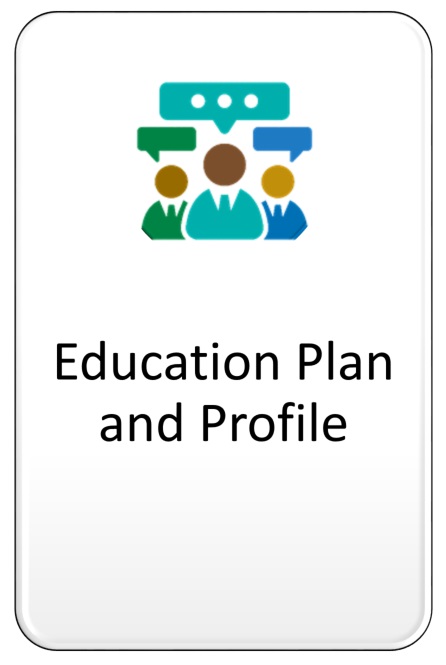
“One of my children received a standard diploma a year early by taking advantage of district opportunities to add graduation credits to his transcript beyond the regular school day…he was able to enter college a year ahead of schedule and was prepared to work hard. The school counselor helped him map out a plan to meet his own goal that he could execute over the course of two years. It was an exceptional example of a public school helping a student realize their self-described educational path.” ―Oregon Resident
The Education Plan and Profile is a document that serves as a road map to guide student learning throughout their secondary education and into their lives after high school. It also serves as a living, growing collection of a student's achievements and interests. This document should stay with the student through any school transfers, and should be updated at least yearly.
The Education Plan and Profile has also been called a personalized education plan in some places in Oregon, or even just the education plan. Because the Oregon Administrative Rules refer to this part of the personalized learning requirements as the Education Plan and Profile, this document will use that language.
Process
Through adult-guided conversations and activities, students explore their interests, talents, and plans for the future. This process is ongoing; as students revisit and revise their thinking over time, their education plan and profile.
Students meet with an adult at least yearly to choose classes and programs of study aligned to their interests, talents, and career ambitions. Students choose examples of their best work and notable achievements to be included in their Education Plan and Profile.
Product
A document or collection of documents (paper or online) for each student that is updated at least once a year, beginning in grade 7. This document should include the following information about the student:
- Interests, courses they plan to take, and career aspirations
- Participation in Career-Related Learning Experiences
- A portfolio of work and achievements, including progress towards any larger goals (badges, CTE concentrations, etc.)
-
Updated Education Plan and Profile Guidance
This downloadable document offers guidance for districts on implementing and supporting the EPP.
-
Oregon Career Information System (Oregon CIS).
Oregon CIS is the state’s official career information system, and is a free resource for all Oregonians. Oregon CIS provides an online library full of career information and career planning tools customized for Oregonians, which allows users to review information and tools, and create and update an education plan and profile for students.
-
Creating collections of evidence
This document provides information about using collections of evidence (e.g., portfolios) as a part of awarding credits, and includes best practices for creating these collections.
-
Helping students through Personalized Learning
This 2015 article offers some best practices for implementing the Education Plan and Profile
Example plan and profile
This document is an example of how a district may document a student’s EPP. It is available as a fillable pdf or a Word document.
Oregon Examples:
West Linn/Wilsonville
School districts shall develop a process that provides each student the opportunity to develop an education plan and build an education profile in grades 7 through 12 with adult guidance. The plan and profile shall be reviewed and updated periodically (at least annually) and be supported by a Comprehensive Guidance Program.
Each student shall develop an education plan and build an education profile.
Each student shall develop an education plan that:
Identifies personal and career interests;
- Identifies tentative educational and career goals and post high school next steps (i.e. college, workforce, military, apprenticeship, other);
- Sets goals to prepare for transitions to next steps identified in section (7)(b);
- Designs, monitors and adjusts a course of study that meets the interest and goals of the student as described in subsection (a) (A), (B) and (C) of this rule that includes but is not limited to:
- Appropriate coursework and learning experiences;
- Identified career-related learning experiences; and
- Identified extended application opportunities.
Through the education profile each student shall:
- Monitor progress and achievement toward standards including:
- Content standards;
- Essential skills;
- Extended application standard; and
- Other standards where appropriate (e.g. industry standards).
- Document other personal accomplishments determined by the student or school district.
- Review progress and achievement at least annually.